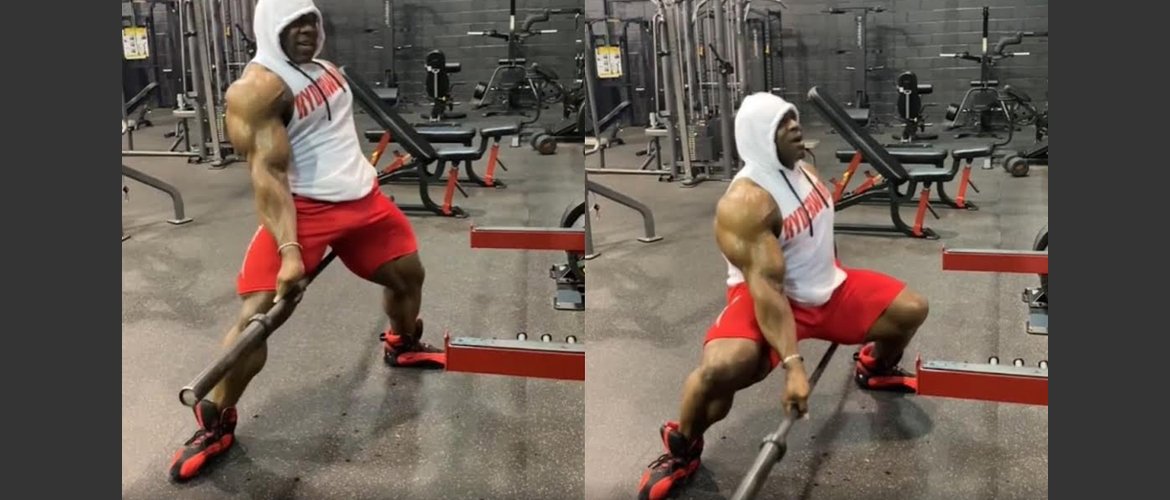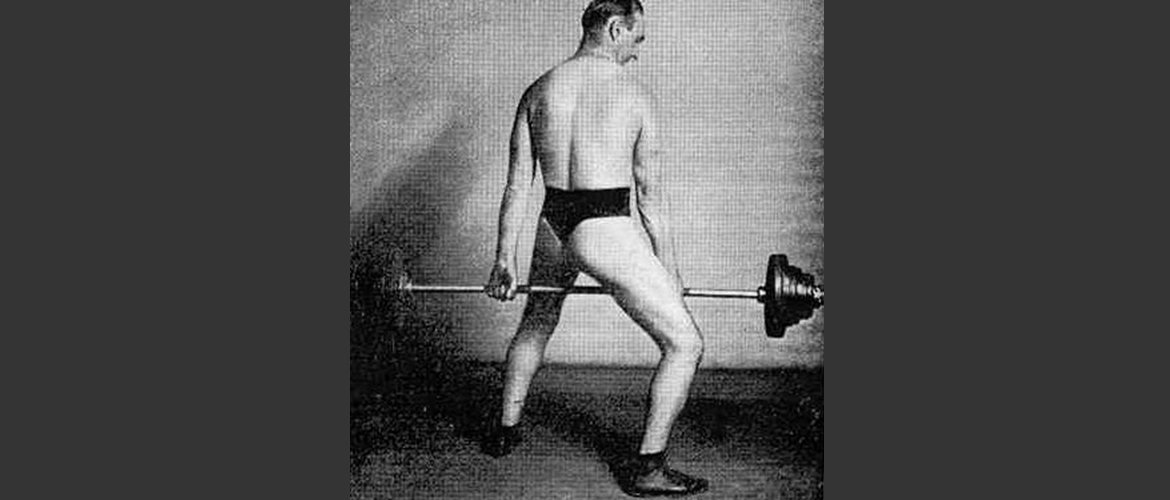Know Your Exercise – Part 6: Jefferson Drills

This is the sixth in a series of blogs in which we analyse some significant weight training exercises that generally miss the attention of fitness buffs. The exercises are challenging but they look simple – so why do them? But then, the very objective of exercise is to CHALLENGE yourself. Do you not want to increase intensity through exercise variations?
Manisha Nath, a powerful strength athlete and GĀYO Master Trainer introduces us to the Jefferson “drills” –
- Jefferson Squat
- Jefferson Deadlifts
We use the label them as “drills” because we aim to cover through this humble blog the aforementioned exercises.
Jefferson Squat
Observes Manisha: “The Jefferson Squat is a massive, functional strength movement. It is performed with asymmetry, hip rotation and hinge and simultaneous heavy loading of weights – all at once!” Biomechanically, because it involves rotation it is a multiplanar exercise that builds asymmetrical and anti-rotational strength without excessive shear forces acting on the spine.
Jefferson?
The Jefferson Squat is named after circus strongman Charles Jefferson (1863-1911). He traveled and performed with Barnum and subsequently with Barnum & Bailey Circus. He was famous for chain breaking and lifting heavy weights. This Squat certainly provides a unique stimulus that can sharpen all athletes’ competitive edge. But like in any other exercise, its effectiveness depends on the technique. In fact, for a beginner, a Jefferson Squat may be difficult and daunting.

Technique
Manisha teaches the Jefferson Squat here.
Let’s go through the process here:
1. Fix your Stance
Stand over a barbell with your feet on either side of the bar. Your leading foot should be pointing forwards, and your trailing foot rotated at 90° outwards with reference to the leading foot. Stand with feet at a reasonable distance so that as you lower yourself into the squat position, your knees are directly above your ankles and your feet stay stabilized and flat on the floor throughout movement.
2. Squat Down and Collect the Bar
Once you are stable in your stance, squat down over the bar and grasp it using alternate grips. Your hands must be equal distance apart.
3. Lift the Bar
Push down into the ground through your feet and stand erect, puling the bar straight up between your legs. Extend your knees through the entire positive ROM.
To squat again descend in a slow controlled manner until your thighs are just below parallel – or, until you reach a depth that challenges your hip mobility but does not compromise your form.
4. After completing your set of reps, change your leg stance so that the trailing leg is now the leading leg. Do not forget to switch your alternate grips. The barbell does not need to touch the ground but if it does touch, allow it to settle before doing your next rep. Avoid using the touch-and-go – bouncing technique.
If you have shorter arms, you may not reach full extension at the top of the movement. Do not hinge forwards at the waist to compensate. This forward hinging is characteristic of the Jefferson Deadlift, which is also a great exercise, just not what the Jefferson Squat is all about.
Benefits of the Jefferson Squat
It combines the benefits of traditional bilateral leg training with the benefits of asymmetrical loading to provide an impressive bouquet of benefits.
- Improved Core Stabilization. The abdominal muscles, especially the obliques, need to work extremely hard to brace against the asymmetrical forces of the barbell and maintain the position of the torso. The Jefferson Squat thus helps stabilize the core.
- Works Multiple Planes of Movement. The unique body position and loading pattern of the Jefferson Squat provides a unique opportunity to develop strength in all three planes of movement — the sagittal / anterioposterior, frontal / coronal, and transverse planes. Although the body moves predominantly in the sagittal plane — in front or behind us — the perpendicular movement of the barbell relative to the body applies force in both the frontal (side to side) and transverse (up and down) planes. Most traditional bilateral barbell exercises are sagittal plane movements. It builds strength in all three planes of movement.
- More Quad and Glute Strength. Although both legs are planted firmly on the ground, the leading leg does most of the work. As a single leg supported exercise done with a vertical torso, the Jefferson Squat develops the knee and hip extensors (quads and glutes) of the front leg.
- Increased Adductor Strength. Any wide stance exercise will hit the adductors which are important for squat strength and athletic performance. Developing thee adductors through the Jefferson squat can help increase squat performance and enhance multi-directional ability.
- Muscles Worked. We list below the various muscle suites that the Jefferson Squat develops. Like in any other squat or deadlift variation, the thighs muscles are the prime movers while many other muscle groups involve as stabilizers or as secondary contributors. Apart from the point of view of exercise kinesiology, the wide array of muscles worked is a benefit by itself!
- Quadriceps, Glutes, and Hamstrings.
- Adductors
- Obliques and Transverse Abdominis
Who ought to perform the Jefferson Squat?
This exercise benefits different types of athletes and lifters. Including it into your program can possibly give you a superior competitive advantage. Here is a list of some types of athletes who ought to do this Squat.
General Population
The average fitness buff can also take advantage of the Jefferson squat. Who does not want to have strong legs and a stronger core? A unique exercise like the Jefferson Squat can introduce some variety and help you push through plateaus. Caveat: Exercisers new to training should develop strength and technique through traditional squatting and deadlifting before going onto advanced variation like this squat.
Sport Athletes
The functional, asymmetrical forces in the Jefferson Squat enable the application of improved performance on the sports field. The obliques and adductors are some of the primary muscles involved in changing direction with agility and power. Strengthening these muscles in the weight room with the Jefferson squat can improve sports performance.
Bodybuilders
As an asymmetrical, bilateral exercise, it allows for comparatively heavy loads that predominantly target the front leg. This makes it a great option for stimulating hypertrophy of the primary muscles involved – the quads and glutes. American champion bodybuilder, Kai Greene swears by this exercise!
Powerlifters
The Jefferson squat offers multiple benefits of single-leg exercise, traditional squatting and a sumo deadlift. It is this a great assistance exercise in any powerlifting program. Amplifies Manisha: “Developing anti-rotational and core strength while lifting loaded a barbell has the potential for building stability that can readily be transferred to the main powerlifts – the deadlift, back squat, and bench press.” Additionally, the selective strengthening of the adductors has the potential to improve your squat strength dramatically.

Jefferson Deadlift
Watch Manisha teach the Jefferson Deadlift.
She points out, people have slightly different way of doing Jefferson deadlift – according to length of the arms, extent of hip flexibility, core strength, etc. But the basics are as follows:
1. As in the Jefferson Squat, –
- Straddle the barbell
- Grip the barbell
- Stand up with the barbell
2. More particularly –
-
- Make sure your spine remains relatively erect so you are not rounding it from a neutral position.
- When you start pulling and rising from the starting position, ensure your knees do not collapse towards the midline.
- Do not lock out your knees before your hips get through the entire movement; else, you will be doing a terrible version of the Good Morning exercise solely with your hips!
- Your barbell grip ought to be vertical – i.e., directly under your shoulders.
Explains Manisha: “Like the Jefferson Squat, the Jefferson Deadlift uses more of a hip hinge but a less vertical torso.” It shifts the focus of the working muscles from the quads to the posterior chain – the hamstrings and glutes. The Jefferson Deadlift is independent of the Jefferson Squat, and lifters may choose to have both in their program or work on one for a few mesocycles before moving to the other variation.
Jefferson Squat with Kettlebells
Kettlebells are getting more and more popular. For those who have no access to a barbell or who are new to the movement, doing a Jefferson Squat with kettlebells is a great way to maximize its benefits with a much easier set-up. You do not have to stabilize the barbell. So, you do not get the same anti-rotation and core stability benefits, but the force applied to the lower body is very similar. Starting with a kettlebell – or, even a dumbbell .. or, even with the smith machine barbell – variation for a few workouts can help set you up for success when you progress to the barbell.
Do let us know your experiences with the “Jeffersons”!
Do let us know! Let’s share the joy of weight training!
